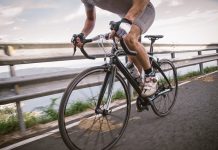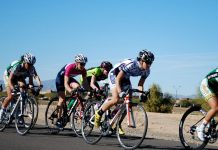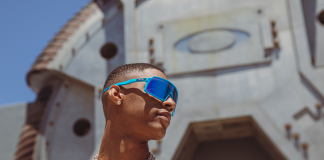Riding a bicycle is one of the life’s joys to experience, especially when you were a kid. Taking that first from going on four wheels to two is one of the milestones in life that most of us would remember. With cycling being quite a popular sport in Malaysia now, you will find more and more people taking up cycling, from a tender age of 4 till 70. Still, I would assume many have not learned how to ride a bike yet, but it’s never too late to start. Anyway, if you have read the previous article I have written about transitioning from road cycling to mountain biking, you’re in for a treat.
In this issue we will be sharing what you will need in order to ride or start riding the right way when you handle the dirt.
Safety first!
Always wear a helmet when you go riding especially off-road. Gloves are necessary too for protection and prevention of your hands from sliding off the grips due to sweaty palms. Elbow and knee pads are optional if you plan to ride conservatively but it is good to be safe and put some on if wearing it makes you feel safer.
Bike Check
Before setting off for your ride, do give your bike a clean-up and good thorough check. Start by checking the brake function, headset for tightness, suspension for smoothness, handlebars, stem, seat post and saddle for tightness. Your wheels should not have loose spokes and it should be able to spin smoothly without wobbling up & down or sideways when moving.
* these skills are intended for absolute beginners looking to ride better off-road.

1. READY POSITION
Getting off the saddle while riding is a vital skill all riders should master whether road or off-road. Why so? Standing offers more stability when the terrain starts to get bumpy or inclination starts to point extremely up or down. By doing so, you are using your arms and legs as a natural suspension for your body.
How is it done?
- Start with coasting
- Pedals and feet parallel to the ground
- Raise your hips up while maintaining a head level
- Body roughly will be in a “boomerang” shape

2. ATTACK POSITION
What is an attack position? An attack position is a modified version of the ready position. There are many usages for this position: Downhill, Hard braking, and Bumpy trails to name a few. Why do we have to get into this position?
We can shift our centre of gravity in order to combat from being pushed over the bars and maintaining good centred balance while going downhill.
How is it done?
- Get into a Ready Position
- Get into a lowered body position
- Arms & knees spread open in a bent position
- Eyes looking far in front
- Move your hips further to the rear

3. TRACK STANDING
Next, what is track standing? I would say it is the ultimate test or skill if you want to impress your friends or master the art of balance. It is the ability to stay upright on a bike without moving forward. Sometimes in the trails you would be forced to ride technical sections really slowly, this is where you would want your balance to be in top priority or else you’ll be wobbling everywhere out of control. We do it so that your accuracy of control and balance can be improved and you will be able to apply it in the trails with confidence.
How is it done?
- Get into a Ready Position
- Gradually apply the brakes
- Use your body and arms to counter balance with the bike
- Try positioning the front wheel at a 45-degree to aid with balance
- Doing it on a slight uphill can aid in the process

4. TIGHT TURNS
Rarely, we get to turn at extremely sharp and slow bend on the road. But in the case of trails, it could be an often affair. What is it exactly? When riding in technical trails, you will often find some switch back turns in uphill, downhill or flat. Why is learning how to turn in tight corners important? It is to make riding fun and challenging, it is also a great workout using your whole body to manoeuvre the bike.
How is it done?
- Use cones or anything as a marker on the ground.
- Make a little half circle, tight enough for you to possibly turn
- Control your speed using your brakes
- Pedal with gentle gradual pressure to counter your braking
- As you tackle those corners, the easier it gets the tighter you make it for progressions. Repeat on both right and left corners.

5. BRAKING
Braking can work for you or against you if it is not applied correctly. Why should we learn about braking? Firstly for safety to stop in time without flying off the bike and to increase control on the bike.
How is it done?
- Get into your Attack Position
- Gradually increase the pressure of both front and back brakes
- Simultaneously, push your hip to the back as the force increases
- Most of the weight will still be on your feet (70% on feet / 40% on hands for weight distribution)

Jessen Lee
Cycling & Fitness Coach
Jessen Lee is a Level 2 Sports Science Coach, specializing in cycling skills and performance, triathlon and general physical fitness. Certified by Majlis Sukan Negara, PMBIA, and ITU, he also conducts group and personal coaching sessions under The Ride School for road, off-road cycling, and triathlon for all levels. With 20 years of training, racing, and coaching experience, he passionately shares his love for sports with the community.
Contact: jessenlee@gmail.com






























































































